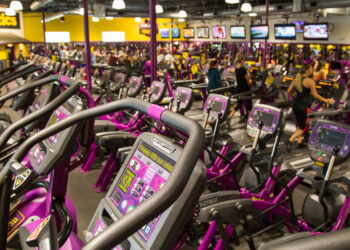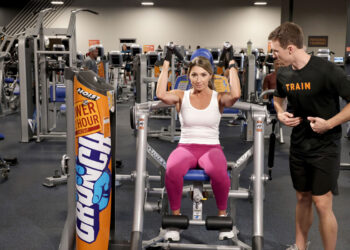THE KEY TO CORE FITNESS IS FUNCTIONAL SAFETY.
I personally have been in the fitness industry as far back as Gstrings over spandex. Many things have changed, but unfortunately some have not. There are still classes with students on a mat doing hundreds of crunches – most of which are done incorrectly utilizing too much psosas, neck and back muscles. So, after many years of incorrect bio-mechanics I discovered that utilizing a small ball allowed students to target the correct muscle groups. I then worked with doctors, physiotherapists, and like-minded researchers to develop a safer approach to Pilates mat training which could avoid the back pain associated with mat exercises. After ten years, the concept of the mini ball has rolled in like a storm. Thousands of trainers have responded ecstatically that this was the first time they felt their abs, and not their backs. Additionally, the exercises have been researched in a university setting which has indeed proved this method is more effective than regular crunches or other forms of abdominal training on the floor. Large stability balls also offer a great tool in training, but they take up a lot of space. The small balls take up less space and individuals can do as many, if not more exercises in a group setting. Plus, exercisers never have to worry about falling off because they are on the floor.
“Core training” is a big buzz word in the fitness industry right now and a very important component. There are many ways in which to train the core, and variety is the key. However, sometimes safety is sacrificed. For example, many Pilates mat classes are overcrowded, and they offer “core” exercises, designed for elite dancers that are actually dangerous to the general population. The students of today are much different than when the Boomers were at their peak of fitness. We have an obesity epidemic with individuals who desperately need to lose weight and move, but they find it too difficult because of weak muscles; especially those that stabilize the spine. Time and time again, I’ve witnessed trainers putting overweight clients on treadmills and having them run like Seabiscuit only to find that the client develops horrible joint pain from such an ordeal. Training the core efficiently requires some time and tenacity, but the results are so beneficial and they enhance all other activities.
A FUNCTIONALLY SAFER METHOD CREATES CORE TRAINING THAT IS EFFECTIVE FOR ALL MEMBERS.
In addition:
• It helps members become stronger to do other forms of classes and activities
• The program can be offered as group or personal training
• Students love it because they feel and see results
• It can be incorporated into other classes such as indoor cycling/ core
Offer short programs to be included in a class or in personal training, or as a separate component to a class or personal training. When a club offers a 30-minute core class of a variety of exercises to target all the necessary muscles that hold us together, the results are fantastic! And, when a student finally understands how to move the right muscle groups, they can then attend a Pilates mat class or indoor cycling class without injuring their lower back.
STARTING WITH THE BASICS, TEST BALANCE AND POSTURE.
Can students even stand up straight? No, they probably can’t, due to poor training techniques and genetics. Here are a couple of balance and posture tests for your students:
1. Standing in neutral alignment, lifting one leg and closing their eyes, can they still balance?
2. When they reach one arm over their head, what happens to their neck and spine, do they remain in neutral?
TRADITIONAL CRUNCHES DO NOT WORK.
Why? First of all, many students cannot even sit up straight because of poor training techniques, and they are utilizing all the wrong muscle groups. Also, many students cannot even find their neutral spine on the floor because of postural deviations, such as lordosis or kyphosis.
A SAMPLING OF THE BASIC EFFECTIVE CORE EXERCISES OFFERED:
• Add the Small Ball for a Safe and Effective Abdominal Curl: Place the ball behind the back at the crest of the sacrum, to gain support, stability, as well as utilize the abdominals; not the hip flexors. Take in a breath and exhale, contract the abdominals and roll over the ball. What did you feel? If you are not sure, try this a few more times and change your levers to increase intensity. Add rotation to activate the obliques, and for modification, hold onto the back of your thighs. Make sure that the global muscles are also active – such as the serratus anterior – to keep the scapula from protraction.
• Side Bend: Place the ball under the rib cage and balance on the right elbow. Place the left hand in front of the body and stack the hips, slowly lift the torso. Inhale to begin and exhale with the lift.
• Bridge with the Ball: Bridging is one of the most effective exercises to train the lower back and hamstrings. But, by placing the ball in between the knees, this allows the student to activate the adductors – which are rarely used, and they are culprits in postural problems. Placing the ball in between the knees offers pelvis stabilization and pelvic floor activation. Inhale to begin; then exhale and lift the hips until the hamstrings contract. Lift a little higher to activate the glutes, and slowly return. Variations and modifications place the ball under the spine, or feet.
• Knee Extension with the Ball Under the Tailbone: I cannot begin to tell you how many students cannot get even one leg in the air to stretch the hamstrings – much less, both of them. By placing the ball under the tailbone, it lifts and supports the sacrum, which allows the legs to extend. This exercise allows you to stretch the hamstrings; yet activate the core because you are on an unstable surface. Make little circles with the legs and activate the obliques. Try closing the eyes for a little harder variation to change the vestibular system.
There are many more exercises that incorporate the ball for variations and modifications in exercise to provide a complete class. For more information, please visit www.ThePilatesCoach.com.
Leslee Bender B.A. ACSM, NASM, ACE, AFAA is the Creator of the Bender Method and Founder of The Pilates Coach. She can be contacted at 866.805.5089, or visit www.ThePilatesCoach.com .








